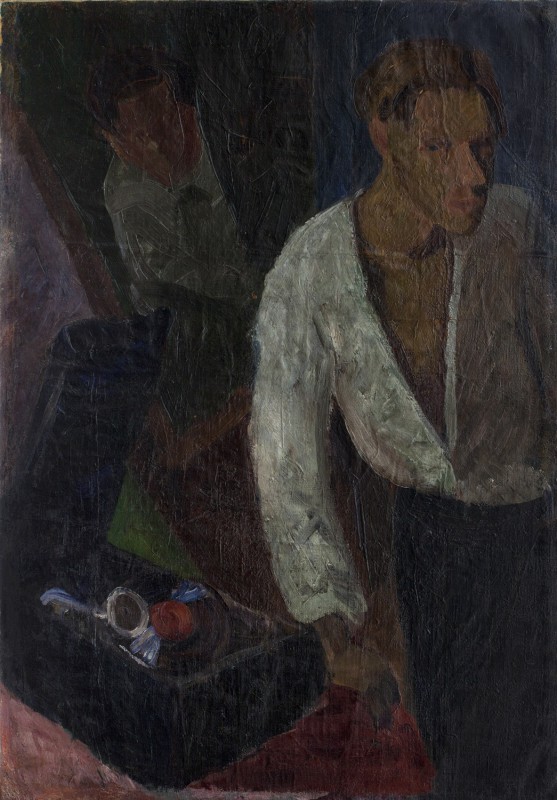Antanas Samuolis
One of the most famous pupils of Kaunas School of Arts, painter Antanas Samuolis, spent the most intense period of his creative life in Žaliakalnis, Kaunas, a wooden house on Vaisių street, among the apple trees. His only trip abroad was rather sad, compulsory due to an illness, he left Kaunas and Lithuania to go for treatment in Switzerland in 1939, where he died in poverty, buried without any loved ones attending and only the cemetery being known nowadays, but not the grave. Today the cemetery fence holds a commemorative plaque with Samuolis’ name, indicating that the famous Lithuanian painter died here (painter Gintautas Vaičys travelled to Switzerland in 2015 and hung the plaque with agreement from the city council).
Up until his going away for treatment in Switzerland, Antanas Samuolis resided in Žaliakalnis, a wooden building at 16A Vaisių Street. Vaisių Street was a typical Žaliakalnis street for the second half of the 20th century, comprised solely of wooden houses, narrow streets and garden plots. Samuolis’ low-ceiling room only contained the necessities: a bed, a stool and a table, anything else was dedicated to his art – easel stands, paintings, paints and brushes – everything the painter might need at any time had to be within reach. Upon considering the famous Samuolis’ painting “My Room” (1934), we can see the painter’s vision produced in a scant environment, wherein he manages to create a modern, lively, brightly coloured interior that still grabs one’s vision.
Samuolis’ friend, painter Viktoras Vizgirda vividly described the small, low-ceiling room, with paintings and brushes everywhere, after visiting his friend’s home for the first time. Vizgirda was impressed by the general artistic atmosphere: “Scattered brushes, paints, flowers, furniture and a strong smell of semi-dried paint fills every inch of the room with a vivid uniformity that could be called a style”. Moreover, Samuolis had, of course, decorated the walls of a wooden house and his own room with painted lilies. Any creative experiences the painter had happened here, in his small room, therefore, Samuolis’ life eventually became highly mysterious to biographers.
The fantasies were also reinforced by the painter’s nephew, writer Raimundas Samulevičius, and his memories of the painter’s illness: “I remember uncle Antanas as if in a dream – in the ground floor window of Vaisių St. 16A, behind the glass in a dark room. Uncle’s illness had progressed so far by then, he was worried, he’d infect me as well. Sometimes even now, when I look at this window, I see his face flash there – obscure, blurred, like an old photograph”
The creation of a peculiar world in a small room is also related to us by one of his most famous self-portraits: “Self-portrait with a turntable”, created in 1929. The painting shows a tight space with dark corners, elongated by the reflection in the mirror, barely offering enough space for the painter with his contrasting open white shirt, his somewhat fragmented body, as if stepping out of the painting, lets you guess that the space of painter’s thoughts and images is much larger that the real room. One could say that this painting shows the often described, mysterious, “samuolic” atmosphere. And although its rendering in the image can still be interpreted, the sound (the turntable in the foreground) will remain a mystery.
Antanas Samuolis was born in 1899, in Puišiai Village (Raseiniai County). In 1920–1922 he took the famous drawing classes founded by Justinas Vienožinskis. In 1922–1929 he studied at Kaunas Art School. One of the most prominent members of the Ars group that was active in 1932–1934. The works of Antanas Samuolis have been acquired by the Lithuanian National Museum of Art, M. K. Čiurlionis National Museum of Art.
Back to the map
